Tag: workout

10 Exercises for Thicker Forearms
Exercises You Should Be Doing For Thicker Forearms
Forearms are one of the most overlooked muscle groups and don’t get the same love as the biceps. Forearms and biceps symmetry can add to the aesthetics of your body and can make your arms look bigger.
Bodybuilding is a game of delusions and thicker forearms and smaller joints can visually add significant size to your biceps. Before we dive into forearms training, let’s touch on the forearm anatomy for a minute.
Your forearms consist of two main muscle groups, the flexors, and extensors. Flexors are also responsible for pronation and extensors for supination. Flexors are present inside your forearms and extensors are on the outside of your forearms.
Reverse Grip Dumbbell Curls
The normal bicep dumbbell curls work the biceps, while the reverse grip dumbbell curls primarily work the forearms and the outer heads of the biceps. Holding the dumbbells with a monkey grip (thumbs over the handles) makes the movement more taxing on the forearms.
Barbell Wrist Curls
Barbell wrist curls are an isolation exercise and work the forearm flexors. If you don’t have an access to a wrist curl machine at your gym, you can place your forearms on a flat bench with your wrist hanging off the bench. Lower the barbell until your knuckles are facing the floor and your palms should be facing you at the top of the movement.
Reverse Barbell Wrist Curls
Reverse barbell wrist curls are the opposite of the normal wrist curls and work the forearm extensors. Hold the barbell with an overhand monkey grip to completely exhaust your forearms.
Arm Blaster Reverse Barbell Bicep Curls
The arm blaster can annihilate your forearms. Maintaining a strict form is the hardest thing while performing the reverse barbell curls. Using an arm blaster can eliminate the use of momentum. You can also use Fatgripz to recruit every muscle fiber in your forearms.
Barbell Roll Outs/Grip Crushers
The grip crushers will fill your forearms with lactic acid. Lock out your elbows and grab a barbell in front of your quads. Allow your hand to open and the barbell to roll to your fingertips. Return to the starting position and complete a wrist curl.
Farmer’s Walk
Farmer’s walk might look easy but will demand all you’ve left in the tank. Grab a pair of dumbbells you can hold on to for a couple of minutes. Go for a 40-50 yard walk with the dumbbells and at the end of the distance, stop and continue to hold the weights for as long as possible.
Towel Pull-Up
The harder it is for you to hold on to something, the more will be your forearm recruitment. Performing towel pull-ups can take your forearm gains to the next level. Set up a towel on the pull-ups bar and perform the pull-ups until you can’t hold onto the towel anymore.
Zottman Curls
Zottman curls are an overall arm builder. Unlike the textbook barbell and dumbbell curls, the Zottman curls train your forearms as well. Stand holding a dumbbell in each hand with the dumbbells facing your sides. Curl the weights so your palms are facing you at the top of the movement. Turn your palms to face down, and then lower the weights slowly, as in a reverse curl.
Behind the Back Cable Grip Crushers into Wrist Curls
Cables are a great way to maintain a constant tension on your muscles throughout the exercise. Grab a straight bar with your back facing towards the pulley. Open your hands and allow the bar to roll to your fingertips. Return to the starting position and complete a wrist curl at the top of the movement.
Plate Pinch
The plate pinch is a simple exercise which requires a couple of weight plates but will take your forearm gains to the next level. Start with two 10 pound weight plates and pinch them together with one hand. Just like the farmer’s walk, go for a 40-50 yard walk while pinching the plates together and at the end of the distance, stop and continue to hold the weights for as long as possible.
How often do you train your forearms? Let us know in the comments below. Also, be sure to follow Generation Iron on Facebook, Twitter, and Instagram.
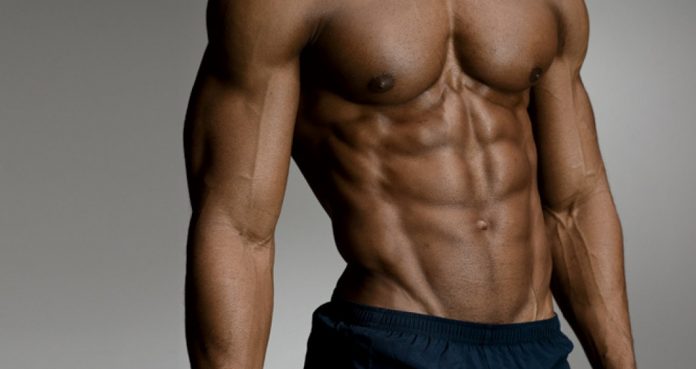
The Most Effective Ab Workout You Can Do at Home
An Ab Workout You Can Do at Your Home
A ripped midsection isn’t easy to get but can make you stand out from the crowd. The good news is, you don’t have to hit a gym in order to train your abs. You can build your abs from the comfort of your home.
Everyone has abs but they are hidden under a layer of fat. Proper diet and training can help in exposing your six-pack. A 15-20 minute ab workout is enough to carve your midriff into a masterpiece.
Lying Leg Raises – 3 Sets 20 Reps
Lying leg raises work your lower abs. Lower abs are the most stubborn fat holding section of your abdominal. If you have an access to a flat bench at your home, you can use it to increase your range of motion.
Lie with your back on the floor, your arms placed on your sides and your legs stretched out. Raise your legs so they’re perpendicular to your upper body. Slowly lower your legs so they’re 2-3 inches away from the ground. Repeat this movement for 20 reps.
Crunches – 3 Reps 30 Reps
We are taking an overall approach to training abs in this workout. Crunches work your upper and middle abs and are one of the most popular abdominal exercises. The high number of reps of this exercise will help in building definition in your midriff.
Lie on an exercise mat with your feet placed flat on the floor. Place your hands behind your head. Some people stretch out their arms and use them to generate momentum which can take off tension from the abs. Lift your upper back off the floor, breathe out and squeeze at the top of the movement. Your lower back should be touching the floor at all times.
Russian Twists – 3 Reps 15 Reps Each Side
Most people overlook training their obliques. Obliques are the fish gill-like muscles present on the sides of your abs. Russian twists are one of the most effective oblique exercises and will help you in building the V-shaped muscle in your lower abs.
Sit on an exercise mat with a slight bend in your knees and feet elevated. Hold a weight (could be a dumbbell or weight plate) in front of your chest. Rotate to your right side, breathe out and squeeze your obliques. Return to the starting position and repeat on the left side.
Reverse Crunches – 3 Sets 20 Reps
Reverse crunches are the opposite of the traditional crunches. In this exercise, you work your lower body as compared to your upper body in the traditional crunches. Reverse crunches work your lower abs.
Lie with your back on the exercise mat, arms on your sides and feet placed flat on the floor. Lift your feet off the floor and bring your knees to your chest. Hold your knees close to your chest for a second before returning to the starting position.
Planks – 3 Sets 1, 1.5, 2 Minutes Each
Planks have earned a name for themselves when it comes to core and ab training. Performing planks can strengthen your core which can help you in performing other exercises better, especially compound movements.
Place your forearms on the ground with your elbows aligned below the shoulders. Your arms should be parallel to your body at about shoulder-width distance. Perform the first set for a minute, the second set for 1.5 minutes and the last set for two minutes. Your abs will be on fire after this workout.
Which is your favorite ab exercise? Let us know in the comments below. Also, be sure to follow Generation Iron on Facebook and Twitter.
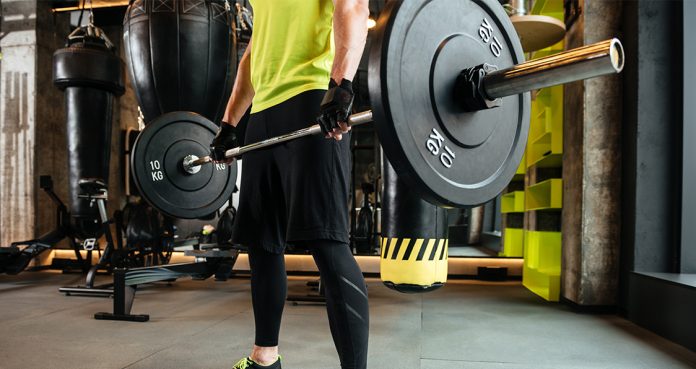
The Best Way To Bring Up Lagging Body Parts
Ways to Bring Up Lagging Body Parts
Only a few people are gifted with perfect genetics. If you’re like most of us mortal humans, chances are you have a lagging body part or two. There is nothing wrong with having weaker muscles groups. You should know how to work on your shortcomings.
Many people when confronted about their lagging muscle groups fall upon blaming their genetics. You don’t have to give up on your lineage just because you have small calves. Read through the article and find your way through the lagging muscles problem.
Change Your Training Splits
One of the most effective ways of building up a weaker muscle group is to train it often. You need to train the lagging muscles more often than you train the other muscles. You can’t expect the weak muscle group to show improvement without switching your training routine.
For instance, if you have a weaker chest as compared to the other muscles and you train all your muscles once a week, you need to start hitting your chest twice a week. Train two muscles in a single session if you have to.
Unilateral Movements
Unilateral exercises include training one side of your body at a time. Training one side at a time helps in better isolating your muscles. It’s easier to establish a mind-muscle connection when you’re training a single muscle.
If you’re performing the unilateral movements correctly, you should have a better pump at the end of your exercises as compared to the normal versions. Make sure you have the right mix of compound and isolation exercises in your unilateral workouts.
Performs Higher Reps on the Weaker Side
Other than having lagging muscle groups, some people have a weaker side. In such a situation, one of the muscles in the group is stronger and more muscular than the other. Some people have a lagging shoulder or a lagging bicep.
You can fix the muscle imbalances to an extent by performing more reps on the weaker side as compared to the stronger side. While performing exercises like the alternating dumbbell curls, perform 10 alternating reps on each side and then drop the dumbbell you’re holding on the stronger side and complete 3-4 more reps with the weaker arm.
Tweak Your Diet
Diet plays a significant role in building muscle mass. While your nutrition needs to be on point at all times, you will have to make a little adjustment on the days you train a lagging muscle group.
While it’s no secret protein is the muscle building macronutrient, carbohydrates are your best friend on your weak muscle training day. Make sure you load up on good carbs right after your workout.
Use Advanced Training Techniques
The stubborn muscles groups demand more than the other muscles. You will have to shock your muscle into growing which is only possible if you introduce something new in every workout.
Use advanced training techniques like drop sets, supersets, intra-set stretching, BFR (blood flow restriction) training, etc. in your workouts. Your lagging muscles should be asking for mercy for not following your command by the end of your workouts.
Do you have a lagging muscle group? Let us know in the comments below. Also, be sure to follow Generation Iron on Facebook and Twitter.

Does Sleep Help with Muscle Growth?
Is there any direct relation with sleep and muscle growth?
So you spend hours in the gym, pushing heavy ass weight, you eat super clean, while getting in all your protein and aminos but the gains don’t seem to be coming. Could muscle growth and sleep be related to the problem?
So what are you doing wrong?
The answer could be as simple as getting enough shut eye. As when you exercise, tiny tears develop in your muscle fibers but muscle repair only occurs when the body is resting or sleeping, and if you aren’t getting an adequate amount of sleep, your body cannot repair the muscle fibers as insufficient sleep is disruptive.
So how many hours of sleep should you get?
One Chinese study concluded that ‘there was a positive association between sleep quality and muscle strength. And men with shorter sleep duration(s), of (6 hours), had poorer muscle strength than that of men who slept for 7-8 hours’ and over’.
The study goes on to say that ‘good sleep quality is associated with greater muscle strength, while shorter sleep duration may be a risk factor for decreased muscle strength.
What actually happens while you are sleeping?
Sleep dramatically impacts your entire body, and it’s during sleep that your body recovers from exercise, repairs itself and grows new muscle tissue.
During this time your muscles also relax, and this is when your muscles are relieved of pain and tension.
When you are sleeping hormones such as testosterone, growth hormone and cortisol are produced in higher doses than throughout the rest of the day.
Testosterone
Testosterone is a hormone which determines how much muscle your body can build, and sleep is vital to this.
A 2011 study from the Journal of the American Medical Association found that ‘cutting back on sleep, may have a dramatic effect on men’s testosterone levels’.
The ‘study shows a week of sleep loss lowered testosterone levels by up to 15%’. And, that skipping sleep is the equivalent to ageing by that of 10-16 years.
And, Eve Van Caulter, director of the study, goes on to say that, ‘low testosterone levels are associated with reduced well being and vigour, which may also occur as a consequence of sleep loss’.
The study also found that 15% of the US adult working population were getting less than 5 hours of sleep a night, and for those wanting to add on quality muscle, that is nowhere near enough sleep.
Growth Hormone
Growth Hormone is also produced while we are sleeping, and this is greatly enhanced early in the night, specifically the first few hours of sleep.
And it has been concluded that ‘in adults the most reproducible pulse of growth hormone secretion occurs shortly after the onset of sleep in association with the first phase of slow- wave sleep (also referred to as SWS), and in men approximately 70% of the GH pulses during sleep coincide with SWS.’
So the first few hours of sleep are crucial as Growth Hormone is vital to the body being able to form and sustain muscle mass.
Cortisol
Cortisol is known as being the stress hormone but it plays so many other roles, and one of those is that it helps control your sleep wake cycle.
It stimulates wakefulness in the morning, which continues throughout the day, and slowly dips as the day goes on, coming to its lowest point around midnight, where melatonin and other hormones rise up in its place to bring about sleep.
Cortisol is the hormone that assists in the breaking down of muscle protein (catabolism), and in excess this catabolic hormone can decrease muscle mass and lean body mass.
What can help stop muscle breakdown?
When you are sleeping you are essentially fasting as your body is not consuming any food during that period and this is catabolic to muscle growth.
One study recommended ‘ingesting 40g of dietary protein prior to sleep to elicit a robust stimulation of muscle protein synthesis rates throughout the night’.
Another study stated that casein protein ingested ‘before sleep increased the ‘whole body protein synthesis rates and improved net protein balance’ and this is the ‘first study to show that protein ingested immediately before sleep is effectively digested and absorbed’.
So to increase the gains chug a casein shake to ensure you don’t waste away during your sleep.
So what supplements can help you sleep?
ZMA – is a supplement made from zinc, magnesium and vitamin B6. If you are zinc deficient then this supplement can boost testosterone levels, but it also helps induce sleep.
Supplements to increase anabolic potential
Glutamine- is an amino acid that prevents catabolism, promotes optimum growth hormone release and supports a strong immune system.
During sleeping periods, muscle wasting can occur due to amino acid shortage, and this can result in increased cortisol secretions and inflammation. Glutamine helps maintain a positive nitrogen balance and helps to promote repair.
BCAA’s – Branched Chain Amino Acids – have proven anabolic properties and increase testosterone and growth hormone levels.
BCAA’s can also help to blunt the rise in cortisol levels during sleep, helping to prevent catabolism and promote maximum anabolism.
So there you have it, male sure you get in a solid 8 hours and supplement accordingly to ensure all that hard work in the gym doesn’t go to waste – literally!
So until next time, keep pumping!
References
https://www.ncbi.nlm.nih.gov/pmc/articles/PMC7785053/
https://www.ncbi.nlm.nih.gov/pmc/articles/PMC5749041/
https://www.ncbi.nlm.nih.gov/pmc/articles/PMC4445839/
https://pubmed.ncbi.nlm.nih.gov/29199194/
https://www.ncbi.nlm.nih.gov/pmc/articles/PMC4755451/#:~:text=During%20NREM%20sleep%2C%20there%20is,activity%20among%20respiratory%20pump%20muscles.
https://pubmed.ncbi.nlm.nih.gov/8627466/#:~:text=Sleep%2Drelated%20secretion%20of%20GH,decrease%20wakefulness%20and%20increase%20SWS.
https://www.ncbi.nlm.nih.gov/pmc/articles/PMC1188300/
https://pubmed.ncbi.nlm.nih.gov/5675428/
https://www.ncbi.nlm.nih.gov/pmc/articles/PMC297368/
https://www.ncbi.nlm.nih.gov/pmc/articles/PMC7830980/
https://www.ncbi.nlm.nih.gov/pmc/articles/PMC4315033/
https://pubmed.ncbi.nlm.nih.gov/2307119/
https://pubmed.ncbi.nlm.nih.gov/12787547/
https://www.ncbi.nlm.nih.gov/pmc/articles/PMC5188418/#:~:text=Greater%20amino%20acid%20availability%20during,synthesis%20rates%20throughout%20the%20night.
For more news and updates, follow Generation Iron on Facebook, Twitter, and Instagram.

4-Week Bodyweight Workout Program You Can Do At Your Home
4-Week Bodyweight Workout Program
Due to the COVID-19 global pandemic, most gyms around the world are closed. It’s probably the first time in history that the fitness enthusiasts have been locked out of the gyms. This could be a big blow to serious lifters as a 4-week gym closure can be a death sentence for their gains.
Not hitting the gyms can have a major impact on your physique and can set you back on your progress by weeks. Most lifters use not having access to weights at home as an excuse to miss their workouts. In this article, we’ll be giving you a 4-week bodyweight workout program that you can do at your home.
Week 1 – Day 1-7
Treadmill / Stairs / Walk – 15 Minutes
Stretching – 2 Minutes
Push-Ups – 100 Reps
Cobra – 3 Sets 15 Reps
Downward Dog Push-Ups – 3 Sets 15 Reps
Bicep Push-Ups – 3 Sets 10 Reps
Squats – 3 Sets 25 Reps
Leg Raises – 3 Sets 25 Reps
Planks – 3 Sets 1 Minute Each
As you could tell, this is not your typical home workouts where you’re done before even breaking a sweat. You can rest for 30-seconds after completing every set. To maintain optimal intensity, you need to make sure that you complete the workout within an hour.
You need to do a total of 100 reps of the push-ups. Depending on your fitness level, you could complete the 100 reps in one set or perform 10 sets of 10 reps. The back is one of the hardest muscle groups to train with bodyweight exercises. You need to have a strong mind-muscle connection to train it effectively.
For the bicep push-ups, place your hands at your sides so that your fingers are pointing towards your legs and your wrists are facing forward. Pin your elbows against your torso. Warm-up your wrists and forearms before performing the exercise.
Week 2 – Day 8-14
Treadmill / Stairs / Walk – 20 Minutes
Stretching – 5 Minutes
Burpees – 3 Sets 10 Reps
Lunges – 3 Sets 15 Reps (Each Leg)
Inch Worm – 3 Sets 10 Reps
Wide Stance Push-Ups – 3 Sets 20 Reps
Prisoner Squats with Calf Raises – 3 Sets 20 Reps
Tricep Dips – 3 Sets 10 Reps
Reverse Crunches – 3 Sets 25 Reps
Superman Planks – 3 Sets 1 Minute Each
Most fitness beginners make the mistake of changing their workouts way too often. Although you need to avoid a plateau to keep making progress, you’ll be leaving gains on the table if you switch exercises before your muscles get the most out of them.
Stretching is an integral part of training at home. The fascia gives way to your muscles to get bigger when you stretch. You’ll see significant improvement in your muscle mass and conditioning with progress in your mobility and range of motion.
Week 3 – Day 15-21
Treadmill / Stairs / Walk – 30 Minutes
Stretching – 10 Minutes
Decline Push-Ups – 100 Reps
Scapular Push-Ups – 3 Sets 15 Reps
Push Back Push-Ups – 3 Sets 10 Reps
Bicep Leg Curls – 3 Sets 10 Reps
Sumo Squats – 3 Sets 25 Reps
Bicycles – 3 Sets 25 Reps
Plank – 3 Sets 20 Reps
In the bicep leg curls, lean against a wall, raise your left leg off the floor, and hold your left ankle with your right hand. Your right leg will stay planted on the floor. The goal is not to curl the leg but to apply resistance to your right bicep.
To do the scapular push-up, set up in a high plank position with your hands under your shoulders and your feet together. Without bending your elbows, pinch your shoulder blades together and press your chest out. Do not let your core wiggle or your elbows bend to try to increase your range of motion.
Week 4 – Day 22-28
Treadmill / Stairs / Walk – 30 Minutes
Stretching – 10 Minutes
Chair Push-Ups – 100 Reps
Bodyweight Tricep Extensions – 3 Sets 15 Reps
Elevated Push-Ups – 3 Sets 10 Reps
Bicep Resistance – 3 Sets 30 Seconds
Narrow-Stance Squats – 3 Sets 25 Reps
V-Ups – 3 Sets 25 Reps
Plank Up-Downs – 3 Sets 20 Reps
In the elevated push-ups, place your feet on an elevated platform. Keep a neutral spine position and the crown of your head should be pointing towards the ground. If you’re attempting to do this for the first time alone, put a pillow under your head.
For the bicep resistance, you need to find a sturdy surface – something that won’t move no matter how much force is applied to it. Stand facing a surface which is at your waist level. Grab it with an underhand grip and try to curl it so that tension is placed on your biceps.
Are you following a bodyweight home workout program? Let us know in the comments below. Also, be sure to follow Generation Iron on Facebook and Twitter.
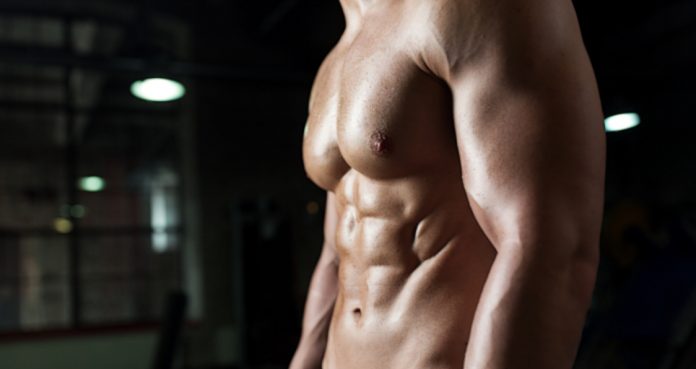
Build Six-Pack Abs at Home With This Workout
Ab Workout You Can Do at Your Home
The desire for obtaining a chiseled midriff is what gets many people to join a gym. What most people don’t realize is you don’t need to get a gym membership to build a six-pack. You can get the midsection of your dreams from the comfort of your home.
While many people train their core at home, a majority of them make the mistake of sticking to the good old crunches. You need to have a variety of exercises in your ab workouts to train your midriff from all angles.
Leg Raises – 3 Sets 15 Reps
In this workout, we won’t leave any stones unturned. We will focus on the upper and lower abs along with the obliques. If you have a hard and sturdy elevated surface at your home, perform the bench leg raises.
Otherwise, you can perform the floor leg raises. While performing the leg raises, make sure your knees are bent at a slight angle and hold the position throughout the exercise. You can also perform the hanging leg raises if you have access to a hanging bar.
Feet Elevated Crunches – 3 Sets 20 Reps
Feet elevated crunches are a variation to the normal floor crunches. In the feet elevated crunches, you can better isolate your upper abs. Lie down with your back placed on the floor and place your lower legs on an elevated surface like a bed or chair.
Your upper legs should be perpendicular to the floor and your hands placed at the sides of your head. Raise your upper body by pushing your lower back into the floor and squeeze your abs at the top of the movement as you exhale. Return to the starting position and repeat for the recommended reps.
Russian Twists – 3 Sets 15 Reps (Each Side)
A midriff can’t be deemed complete without well-carved obliques. Obliques are the fish gill-like muscles present at the sides of your abs. Most people overlook training their obliques and hence lack the definition in their mid-sections.
Sit on the floor with your knees bent so your feet are placed flat on the floor. Lean back your upper body so it forms a 60-degree angle with the floor. Extend your arms straight forward so your hands are above your knees. As you exhale, turn to your right side by twisting your torso. Return to the starting position and repeat on the left side.
Reverse Crunches – 3 Sets 20 Reps
Reverse crunches are the exact opposite of the orthodox crunches. While the crunches work the upper abs, the reverse crunches train the lower abs. Lie down with your back on the floor and place your arms at your sides.
Bend at your knees so only your heels are touching the floor. As you raise your legs, breathe in and bend your knees so that your upper legs touch your torso at the top of the movement. Return to the starting position while breathing out.
Heel Touches – 3 Sets 20 Reps Each Side
Training for toned sides can be detrimental in building a perfectly crafted midriff. The heel touches are one of the easiest exercises on this list. Lie down with your back on the floor and place your arms at your sides.
Bend at your knees so your feet are placed flat on the floor. Lift your head off the floor so that there is tension on your upper abs. Crunch at your ride side to touch your right feet. Return to the starting position and repeat on the left side.
Planks – 3 Sets 2 Minutes
Planks are an incredibly effective core strengthing exercise. Performing the planks are must for anyone who wants to train at home. A strong core not only makes your abs rock hard but also helps in performing compound movements by improving and strengthening your body stabilizers.
Get into a prone position on the floor, supporting your weight on your toes and your forearms. Bend your arms so that your elbows are directly below your shoulders and your forearms are parallel to each other. Your body should remain in a straight line throughout the exercise. Don’t let your hips sack down or form a bridge to take off the tension from your abs.
Which is your favorite exercise to perform at home? Let us know in the comments below. Also, be sure to follow Generation Iron on Facebook and Twitter.
*Header image courtesy of Envato Elements
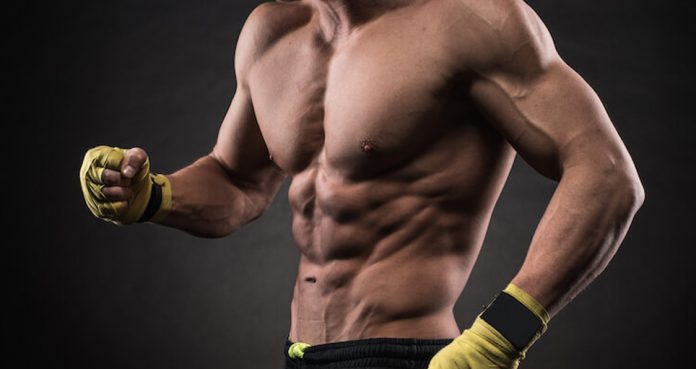
Build Shredded Obliques With This Workout
Get Ripped Obliques with this Workout
A midriff cannot be deemed complete without shredded obliques. Obliques are the fish gill-like muscles present on the side of your abs. Most people are too busy performing crunches and hanging leg raises that they completely forget about training their obliques.
While it is important to have a low body fat percentage to show the obliques, you still need to train them. The obliques need to be trained for both function and show. The oblique family plays a major role in many different movements and are an essential part of the core.
1. Cable Woodchoppers – 3 Sets 15 Reps
Unlike the free weight, cables are incredibly effective in maintaining constant tension on your working muscles. Cable woodchoppers target your obliques and will give you a muscle tearing pump by the end of the exercise.
Attach a D-handlebar to a tower, and move the cable to the highest pulley position. Stand at an arm’s distance from the pulley. With your right side to the cable, grab the bar with both hands. In one motion, pull the handle down and across your body to your front knee while rotating your torso. Repeat with your left side.
2. Decline Bench Oblique Crunches – 3 Sets 20-15-15 Reps
The decline oblique crunches are one of the most underutilized exercises. It’s important to squeeze and contract your obliques while performing these exercises and maintain a full range of motion.
Lie on your left side on a decline bench. Keep your right hand on the back of your head and place your left hand on your right obliques. Touch the bench at the bottom of the movement and your upper body should be perpendicular to the floor at the top of the movement. Repeat on your right side.
3. Side Planks – 3 Sets 1 Minute, 45, 45 Seconds on Each Side
Planks have earned a name for themselves for being a great core builder. Planks exploded onto the scene with the introduction of CrossFit. Side planks are a plank variation which helps in building definition in your obliques.
Start on your side with your feet place one on top of the other and one forearm directly below your shoulder. Raise your hips and contract your core until your body is in a straight line. Don’t let your hips fall down during the working set.
4. Landmines – 3 Sets 15 Reps Each Side
Landmines are a great core builder and your obliques take the most beating in this exercise. If you don’t have the landmine equipment at your gym, you can perform this exercise by placing a barbell in a corner and holding one end of the barbell with both your hands.
Stand with your feet shoulder-width apart while holding the barbell with both hands in front of your face. Keep your elbows locked out while you twist to your right side. Go as far as you can without twisting to your hips. Return to the starting position and repeat for the left side.
5. Russian Twists
Russian twists are one of the most common oblique exercises. Most people make the mistake of going too heavy on this exercise. Use a weight plate or a dumbbell with which you can follow a full controlled range of motion.
Sit with your feet placed flat on the floor and your back at a 60-degree angle. Hold a weight plate over your knees with your arms stretched out. Rotate to your right side and contract your obliques. Return to the starting position and repeat for the left side.
Which is your favorite oblique exercise? Let us know in the comments below. Also, be sure to follow Generation Iron on Facebook, Twitter, and Instagram.
*Header image courtesy of Envato Elements.
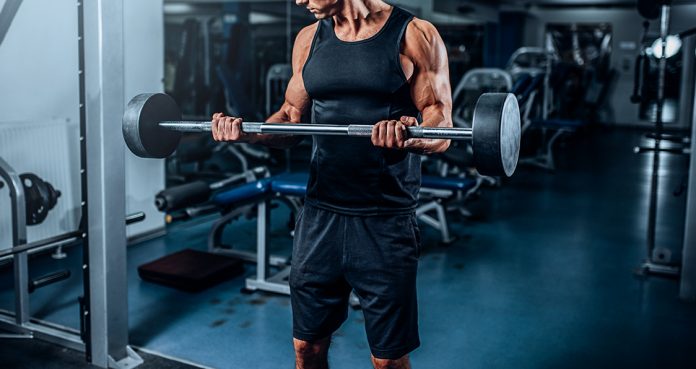
Follow This 4-Week Forearms Workout Plan To Turn Your Tiny Twigs Into Wood Logs
Follow This 4-Week Forearms Workout Plan To Turn Your Tiny Twigs Into Wood Logs
Forearms are the under-loved siblings of the bis and tris. The majority of people think that training biceps will automatically build their forearms. The said overlooking is why most people limit their forearm training to a couple of sets at the end of their arm workouts.
If you feel that your forearms are lagging as compared to your upper arms, it’s time you stop treating them as accessory muscles. A pair of beefed-up forearms can add to the symmetry of your arms and make them look bigger.
The Best 4-Week Forearm Building Workout
Week 1
Reverse Grip Barbell Curls – 5 Sets 20-20-15-15-12 Reps
Dumbbell Hammer Curls- 5 Sets 20-20-15-15-12 Reps
Preacher Curls – 5 Sets 20-20-15-15-12 Reps
Towel Cable Rows – 5 Sets 20-20-15-15-12 Reps
Behind the Back Barbell Crush – 5 Sets 20-20-15-15-12 Reps
Since the forearms are a small muscle group, you don’t need to dedicate entire workouts to training it. If you have weaker lower arms as compared to your bis and tris, you should begin your arm training with them.
We would recommend that you train bis and forearms or tris and forearms on a single day. Targetting the three muscles together on the same day isn’t going to be as effective as focusing on two.
If you don’t already carry a hand towel to the gym, you should get used to bringing not one but two wipers. Using the hand towels recruits all the muscle fibers in your forearms as it makes holding onto the weight harder.
Week 2
Wrist Curls – 5 Sets 20-20-15-15-12 Reps
Close Grip Bench Press – 5 Sets 10-8-6-5-4 Reps
Cable Kickbacks – 5 Sets 10-8-6-5-4 Reps
Barbell Skullcrushers – 5 Sets 10-8-6-5-4 Reps
Farmer’s Walk – 5 Sets 1-Minute Walk
The second week’s workout will be a triceps and forearms session. In the first and third week, you can club the tricep workout with your chest session. Train your biceps with your back in the second and fourth weeks.
You’ll be performing a lower number of reps in your tricep exercises as compared to the bicep exercises. Triceps are mostly formed of fast-twitch muscle fibers and respond better to lower reps and heavier weights.
In all the exercises you perform, make sure you’re focusing on your forearms and maintaining a mind-muscle connection. While doing the farmer’s walk, hold onto a heavy pair of dumbbells so that you have to struggle past the 30-second mark.
Week 3
Towel Kettlebell Curls – 5 Sets 20-20-15-15-12 Reps
Reverse Grip 21s – 5 Sets
Zottman Curls – 5 Sets 20-20-15-15-12 Reps
Behind the Back Cable Curls – 5 Sets 20-20-15-15-12 Reps
Wrist Rollers – 5 Sets 10 Rolls Up 10 Down
If you don’t have access to kettlebells in your gym, you can use the good-old dumbbells instead. You might have performed the 21’s but the reverse grip 21’s are a whole new game.
Zottman curls are one of the most underutilized arm training exercises. The Zottman curls are arguably the most brutal exercise on the list and you’ll have to keep your ego in check while performing it.
Week 4
Cable Pressdowns – 5 Sets 10-8-6-5-4 Reps
Reverse Wrist Curls – 5 Sets 20-20-15-15-12 Reps
Single Arm Overhead Tricep Extensions – 5 Sets 10-10-8-8-8 Reps
Grip Crush – 5 Sets 20-20-15-15-12 Reps
Dead Hangs – 5 Sets 1-Minute Each
Most people make the mistake of lifting too heavy when it comes to forearm training. Going overboard with the weights while training your lower arms can result in an injury as the wrists are relatively smaller joints and aren’t meant to take the constant tension produced by exercises like the wrist curls.
In the forearm training, your aim should be to go after the pump rather than trying to kill the muscles with heavier weights. You can push the envelope with the intensity in lower arm training with exercises like the grip crushes as there isn’t any wrist curling involved.
How often do you train your forearms? Let us know in the comments below. Also, be sure to follow Generation Iron on Facebook and Twitter.
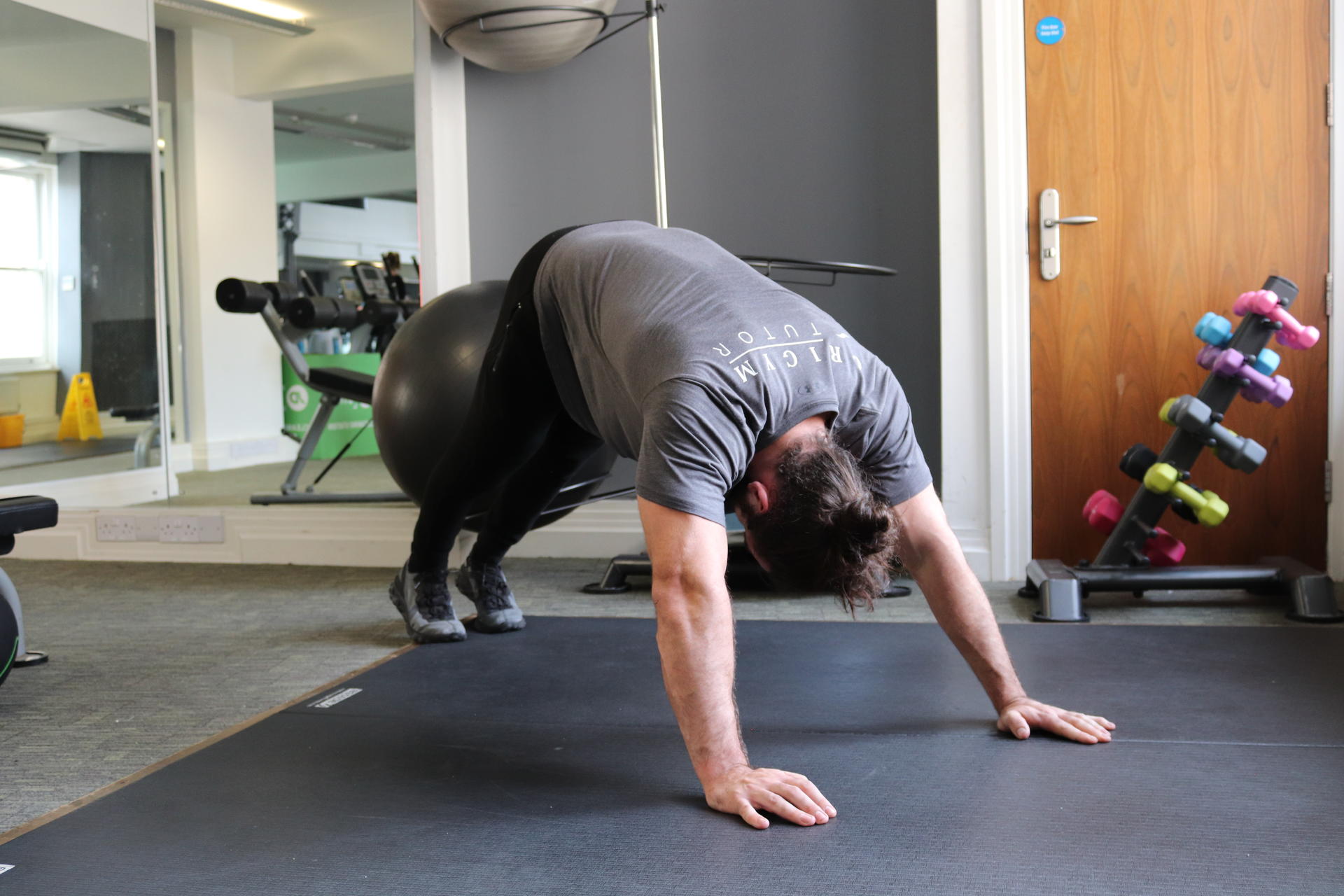
5 Best Supersets To Crush Biceps
Here are some supersets to hit biceps hard!
Spending a training day focused solely on the biceps seems like an exercise in vanity. Why not incorporate the “guns” into a typical chest-and-arms routine?
But there’s nothing wrong with spending a full workout training for the gun show. Plus, there’s no reason to feel guilty about it. For all the talk in recent years about training for functional movement and core strength – not just like a bodybuilder for aesthetics – there’s been little appreciation of the functional role of the biceps.
Try lifting a couch or kid without the biceps – or pushing or pulling just about anything. Sure, movement starts from the core but your arms aren’t just levers along for the ride. The biceps are fully engaged, guns locked and loaded. Studies show that the biceps support many movements across the elbow and shoulder joints.
Even if you’re a dedicated athlete training for a specific sport, there’s nothing wrong with taking an occasional workout to focus on your biceps. If nothing else, it’s a welcome diversion and the best workout is, of course, the one you haven’t done before, or at least not in some time.
In this biceps superset workout, we’ll pair a push and a pull movement. This way we both activate and challenge the biceps in an efficient manner that enables us to keep moving through the workout with no rest.
Pete Williams is a NASM certified personal trainer and the author or co-author of several books on performance and training.
FIRST SUPERSET: DIVE BOMBER PUSHUPS AND PRONE GRIP PULLUPS
Dive Bomber Pushups
What it does: This pushup variation requires more use of the biceps and shoulders.
How to do it: Start with hips in the air and feet shoulder-width apart. Lower head and shoulders down as if going under a bar. As you push your head and shoulders into position, arch your back. Reverse process to return to starting position.
How many? 10 reps.
Prone Grip Pullups
What it does: Though best known as a back movement, you’re also hitting the biceps, along with the shoulders and chest.
How to do it: Grab the bar with an overhand grip. Hanging from the bar, pull your shoulder blades back and down to lift your body and build momentum. Finish by pulling up with your arms.
How many? 10 reps
SECOND SUPERSET: FARMER’S CARRY/RACKED POSITION AND INVERTED BAR ROWS
Farmer’s Carry, Racked Position
What it does: The traditional farmer’s carry is an effective full-body move that also challenges endurance as you increase the distance carried. By carrying the dumbbells in a racked position (heads of dumbbells at shoulder level) we isolate the biceps.
How to do it: Carrying the dumbbells in a racked position, walk for 30 seconds, carefully avoiding the oblivious earbud zombies not paying attention in your gym.
How long? 30 seconds.
Inverted Bar Rows
What it does: This provides many of the benefits of a pullup while better isolating the biceps.
How to do it: Lie underneath a bar that’s several feet above you, such as in a squat rack. Hang underneath the bar with heels on the ground and arms fully extended. Pull your chest toward the bar. Pause at the top and return to starting position.
How many? 10 reps.
THIRD SUPERSET: DYNAMIC PUSHUPS AND CHIN-UPS
Dynamic Pushup
What it does: By exploding on the upward movement, you hit the biceps harder.
How to do it: Slowly lower yourself down then explode up as hard as you can. The upward movement should take no longer than 1 second.
How many? 10 reps.
Chin Ups
What it does: Like the overhead pull-up, the chin-up is a terrific shoulder and back exercise to build that V-shaped torso. But by doing the underhanded chin up, we place more emphasis on the biceps.
How to do it: Grab the bar with an underhand grip. Hanging from the bar, pull your shoulder blades back and down to lift your body and build momentum. Finish by pulling up with your arms.
How many? 10 reps
FOURTH SUPERSET: SUSPENSION TRAINER PUSHUPS AND SUSPENSION TRAINER CURLS
Suspension Trainer Pushups
What it does: The instability of the trainer forces you to recruit more muscles and the biceps play a prominent role. Plus, by pairing it with suspension trainer curls, we can keep things moving.
How to do it: Feet on the ground, assume pushup position and grab the handles. Lower and push up.
How many? 10 reps.
Suspension Trainer Curls
What it does: With your body weight as resistance, this move hits the biceps hard.
How to do it: Grab the suspension trainer handles with both hands. Lean back to fully extend your arms. With feet shoulder-width apart and back straight, use your arms to pull yourself up (toward the trainer) by performing a curl. Bend the elbows and curl the handles as close to your shoulders; use the biceps instead of your upper arms.
How many? 10 reps.
FIFTH SUPERSET: FOUR-IN-ONE AND PLANK
Four-In-One
What it does: This challenging four-in-one exercise hits your biceps from all angles.
How to do it: Start with light weight on a barbell and curl 8 times. Next curl halfway, pausing for a second just above your navel at each of 8 reps. After that, take the bar up and descend just below your pecs, again pausing for a second before returning for 8 reps. Finally, do 8 more full reps.
How many? 1 set
Plank
What it does: This promotes overall core stability, but your biceps are keeping you in a proper position. Plus, after doing the Four-in-One, this will seem like a break.
How to do it: Lie in a prone pushup position with hands on the floor, elbows under shoulders, and bent 90 degrees. Push up off the elbows, tucking your chin so your head is in line with your body. Keep head in line with spine and belly button drawn in. Hold for one minute.
How long? 60 seconds.
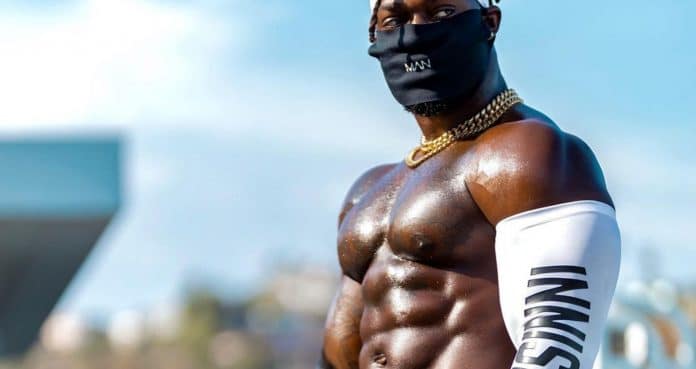
Try This Big Neechi Biceps & Triceps Workout For Greater Growth
Pump those bis and tris with this awesome workout from Big Neechi.
Neechi Sosa, better known as Big Neechi, is a celebrity bodybuilder known for his lifestyle, content, and massive physique. He has been featured in many GI exclusive interviews and was also featured in Strength Wars: The Movie. He understands fitness and seeks to use social media as a tool to promote himself and inspire others.
For those of us looking to really capitalize on gains, it can be a waste of time to just flounder through and not see results. So, why waste our time doing that? Taking notes and seeking the best advice from professionals is exactly what we need to only see the best growth possible. With our bodybuilding goals in mind, it only makes sense to look to other bodybuilders to find and seek out the best possible tips so we can look like them. Plus, they are living proof of what those workouts can do.
As a popular figure in the online bodybuilding world, Big Neechi knows just what it takes to push himself and capitalize on many great exercises with the best gains possible. On top of training, nutrition and supplementation are important, but nothing beats having a well-rounded workout in your training plan. Especially one designed to boost all areas of your growth and give your arms that bulging look you need most.
Full Name: Neechi “Big Neechi” Sosa
Weight
Height
Date Of Birth
215-225 lbs.
5’10”
10/31/1991
Profession
Era
Nationality
Trainer, Fitness Influencer
2010
American
Let’s get into this Big Neechi workout and see just how he pumps those bis and tris to see the best results possible. With the right approach and the best exercises, plus a mindset that only fuels gains, this workout is sure to give you results like Big Neechi himself so you look and feel your best.
Photo via @bigneechi Instagram
About Big Neechi
Big Neechi started working out at a young age and quickly fell in love with it. While in junior high school, he broke the high school bench press record and with his sheer strength and winning mindset, football teams and scholarship opportunities came knocking. However, his potential football career ended abruptly and he was left to seek out something else.
He fell back into what he loved, being lifting, and his passion only grew more and more. With his workouts increasing in weight and intensity, he started crafting and sculpting a physique that others started to envy. His social media was also on the rise as someone who partied, and knew how to throw wild parties, plus with more attention on him, he saw the chance to capitalize.
He ended up getting a degree in Exercise and Sports Science and used his knowledge and experience to only further his academic credit. Having been featured in a number of publications, and also some TV appearances, Big Neechi has set himself as someone who people gravitate towards for both content and advice.
Photo via @bigneechi Instagram
Big Neechi Biceps & Triceps Workout
In a recent YouTube video, Big Neechi shows off his impressive biceps and triceps workout so everyone can get a glimpse into how he grows his arms. A great mix of amazing exercises, these combine machines and free weight so you can tackle all of those lifting wants and needs with no problem. Exercises include:
Let’s get into this workout from Big Neechi so you can place this into your routine and see how you like it. Once you perform this once, you will love what this can do for you on those arm-focused days.
The Workout
Warm-Up
Big Neechi starts this workout with triceps pushdowns. His note is to keep these controlled and not to jerk the cable down with excessive movement. Also, keeping your elbows tight with no movement allows for total activation of the muscle.
Exercises
Sets
Reps
Seated DB Overhead Triceps Extension
2-3
12
EZ Bar Skullcrushers
2-3
12
Single Arm DB Preacher Curl
2-3
12
Machine Preacher Curls
2-3
12
Weight Dips
2-3
12
Big Neechi finishes this workout with a round of battle ropes to fire up those muscles and add some intensity to end the session. Battle ropes are great ways to build strength and conditioning and provide that added challenge once fatigue starts to settle in.
[embedded content]
Big Neechi Nutrition & Supplementation For Continued Gains
On top of a great workout, Big Neechi puts a real emphasis on nutrition to make sure his macros are all in line and that he eats incredibly clean. Foods like chicken and rice, vegetables, and other healthy options are the right approach for pumping him with the necessary nutrients to fuel any workout. Of course, protein is essential as this will give those muscles the proper fuel to grow, especially after a grueling workout like this biceps and triceps one above.
When it comes to supplementation, Big Neechi is also in tune with what works for him. Great supplements like protein powder ensure growth and recovery by pumping you with adequate amounts of protein and a pre-workout is always great for those looking toward muscle pumps and increased energy. If you are someone who enjoys a supplement mid-workout, BCAAs are perfect for fighting through fatigue and kickstarting growth before the workout is even complete.
Wrap Up
This biceps and triceps from Big Neechi is exactly what you need to see in order for the most effective gains. Well-built arms are key in any well-rounded physique and will make others envy the work you put in. A great mix of free weights and machines, Big Neechi takes full advantage of the gym and the equipment afforded to him in efforts to see the best growth possible. Place this workout into your arm day routine and see what this can do for all your gains today.
Let us know what you think in the comments below. Also, be sure to follow Generation Iron on Facebook, Twitter, and Instagram.
*Images courtesy of Envato
